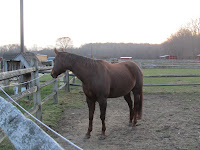Five Golden Rules to Live By for Sailing Safety! By John Jamieson at www.skippertips.com
If you are anything like me, one of the toughest decisions to make seems to be the "go; no go" one. That final call every sailing skipper needs to make before casting off.
Use this five step process from the masters. You will gain the confidence to deal with those unexpected situations that come your way when day sailing, cruising, or racing. |
But if you have sailing crew aboard, you are tasked with their safety and well being. So how can you make that final call in a calm, confident manner?
Here are five reliable methods, used by the world's best blue water sailors, to help you meet the challenges ahead...
When was the last time you checked the chafe on each block and tackle, such as the traveler control lines, mainsheet, boom vang?
This becomes more critical as the weather deteriorates. Use this process underway and at anchor. Keep on top of little problems so that they don't become big ones.
|
These don't need to be complex things that involve hours of study. Learn an easier way to tie a common sailing knot, a better way to balance your small sailboat, or a safer method to reef your mainsail to boost your sailing skills sky high!
Practice drills produce an automatic response under trying conditions. That's the main reason that military services have drill after drill. There's nothing familiar about the sea to human beings. We are land creatures. It makes sense that we practice techniques like sail reefing or how to tie a marine knot over and over again.
Once these become second nature, you move on to the next step on the learning ladder. As multi-time circumnavigator Hal Roth said about cruising under sail: "You can pick up the fundamentals quickly, but half a lifetime is scarcely enough to perfect your techniques."
Combine clouds with a barometer, and you can often forecast weather with better accuracy than a NOAA broadcast. Be on the lookout for wind shifts or a change in the sea-wave direction. The more you understand marine weather, the more prepared you will be when the rough stuff arrives.
~~~~~~~~~~~~~~~~~~~~
Follow these five tips from some of the world's wisest, most experienced sailors. You will build confidence and knowledge and gain the wisdom to make the right call to keep your sailing crew safe and sound.
from International Marine / McGraw-Hill
"Written so clearly that navigation and seamanship will be comprehensible to anyone." -- Dave and Jaja Martin, circumnavigators, authors and stars of the documentary "Ice Blink".
"It should be read by anyone contemplating coastal cruising or blue water voyages." -- Ted Brewer, world famous yacht designer, veteran ocean racing and cruising sailor.
"It's a great book. The prose is simple and clear." -- John Vigor, acclaimed author of 12 sailing books and cruising sailor".
Captain John Shares 25+ Years of Experience to Show You How to...
All this and much more. 326 pages tailored to short-handed sailors and crews.
Easy to read and loaded with crystal clear illustrations. Get your copy today!
| © 2011 SkipperTips.com All Rights Reserved. Reproduction without permission prohibited. |


































